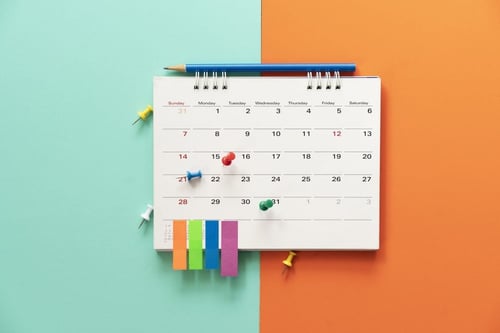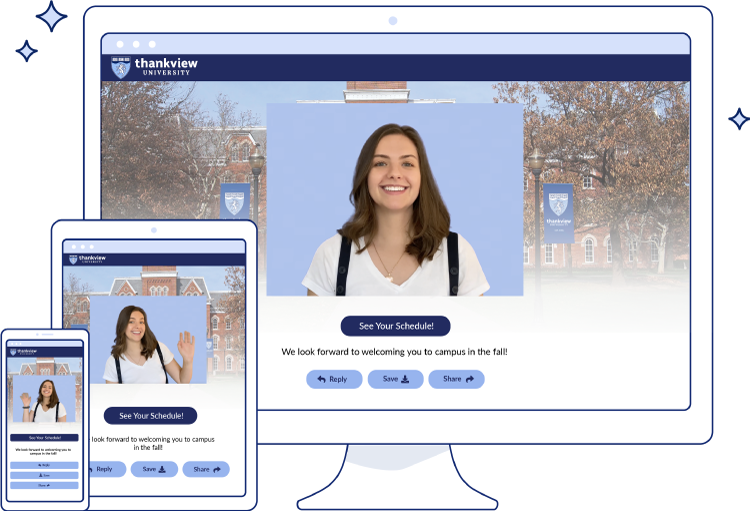Simplify Planning With This Fundraising Plan Template
So you’re tasked with writing a fundraising plan for the year ahead? It’s a big task, but we’re pretty confident you’ll make it happen. We’re here to help. Follow this fundraising plan template to build a strategy document that’ll help lead your organization towards success.
What Is a Fundraising Plan?
All organizations need funds to fuel the work they do. For nonprofits, that’s usually through fundraising efforts. But this means there’s a lot of different activities, events, and processes to manage. How do you plan for all that without getting dizzy?
Enter the fundraising plan. This document will lay out your goals, resources, planned activities, and deadlines for fundraising. Think of it as the roadmap that’ll send your nonprofit on a journey towards stability and success.
A successful fundraising plan covers every stage of the fundraising journey. You’ll capture your strategic ideas, assign funds, and delegate responsibilities to your team members.
With everything in one place, it’s much easier to make decisions and review your progress. No more on-the-fly decisions about whether to host that walkathon or where you’ll find your next big donor.
Your Simple Nonprofit Fundraising Plan Template

Not sure where to start with your fundraising plan? Happens to the best of us. Great news though — we’ve pulled together everything we know to bring you this step-by-step fundraising campaign plan template. Use it to create your own playbook for how you’ll raise those all-important funds.
Set Your Goals
One of the first things you’ll want to do is state your goals. Maybe you want to increase the number of major donors you have or diversify your income streams from businesses. Whatever your goal is, put it at the heart of your fundraising strategy template. It’ll help keep the focus on what matters.
Lay out some meaningful fundraising targets using the SMART method. This means your goals should be:
- Specific — Set a tangible target, like a percentage or figure.
- Measurable — Make it possible to track your process, like counting how many donors you’ve gained in a month.
- Achievable — Be realistic about what you can achieve with the resources you have.
- Relevant — Focus on tasks that are worthwhile and a good use of your time and resources.
- Time-based — Set a deadline for your goal, with milestones that’ll help you track progress.
Here’s an example of a SMART goal:
“We will increase our number of major donors by 12% by the end of Q3 in 2021.”
The goal features a specific outcome — a 12% increase in major donors. It’s measurable, as you can easily track how many donors you’ve gained or lost every month. The percentage goal has been set based on research and previous successes.
The goal is relevant as the example organization has realized having more major donors allows them to free up resources spent on other activities. And the goal is time-based — this nonprofit has set a tangible target for when they’ll make this happen.
Your goals don’t have to just focus on new donors though. Think about donor retention and how you can keep those lovely supporters around for the long haul.
Most organizations write a funding plan for the year ahead. Don’t be afraid to include a handful of longer-term goals, though. Setting strategic targets for two, three, or four years ahead can help you stay motivated and determined to turn them into reality.
Your fundraising goals should tie into the wider goals of your organization. Your vision, mission, and values drive what you do as a nonprofit. Your fundraising targets should help you get the income you need to make that happen.
Reflect on Past Activity
Once you’ve set your goal it’s super tempting to jump into planning fundraisers. Who doesn’t love all that creative stuff? But take a step back and look at the fundraising success and challenges you’ve achieved in previous years.
This section is a great opportunity to look back at your fundraising history. Here are a few questions to ask yourself:
- Which years were successful, and why?
- How has your fundraising strategy changed?
- Which activities didn’t work for you last year?
- How many people do you need to make your plans a reality?
Knowing what works — and what doesn’t — means you can plan your next year for success.
Some nonprofit organizations will have a detailed history of past fundraising efforts. You can use this data to make some really strategic plans for the year ahead.
Others might be starting from scratch, or not have a lot of past data to work with. That’s okay, because you can start to capture that now and give your future fundraising plans an even better start.
Review Resources and Infrastructure

We can only work with what we have. While we’d love million-dollar budgets and a dedicated team of hundreds, most nonprofits don’t have that at their disposal. That’s why thinking about your resources and infrastructure is an essential step in the planning process.
Every nonprofit is different, but chances are we have similar resources. Here are a few common resources:
- Fundraising budget
- Marketing budget
- Staff — including the unique talents they bring to the table
- Volunteers
- Board members
- Fundraising software
- Printed materials
- Help from hired experts — e.g., an events coordinator or grant writer
Get really clear on what resources you have available to you. Put this in cold, hard numbers if you can. There’s a huge difference between a $5,000 events budget and a $25,000 one — so knowing your numbers can help you make the best impact with what you have.
The same goes for your people. How many staff members do you have? What hours do they work? What are their special skills? Are you likely to hire new employees? What about your volunteer pool? Understand the strengths and limitations of your greatest asset — your team.
Think about your other resources too. Do you have a project management tool? Could you use technology to engage with donors? What are your printing costs? Not only will this exercise help you understand what you have, you might find a way to improve on what you’re already doing.
Plan Your Fundraising Activities
It’s time to take a look at how you’ll ace those fundraising goals. For a lot of people, this section of the fundraising event planning template is the best. You get to think about the different tactics you’ll use and get really creative.
For most organizations, a successful fundraising strategy doesn’t involve just one or two activities. You might find yourself balancing five, 10, or 15 different tactics to reach and engage with your supporters.
Here are some of the most popular fundraising tactics for nonprofits:
- Live fundraising events
- Virtual fundraising events and webinars
- Major gifts from individual donors
- Annual giving campaigns
- Planned giving
- Monthly membership subscriptions
- Crowdfunding and online donation pages
- Capital campaigns
- Telemarketing
- Direct mail
- Government grants
- Corporate grants and sponsorships
Be aware of trends, but don’t follow them blindly. A viral challenge or glitzy special event might sound fun, but it isn’t for everyone.
Think about who your new donors and current donors are, where they spend time, and what they engage with. Create your fundraising plan with them in mind. After all — you want to become their new favorite nonprofit, right?
Create a Delivery Timeline and Assign Responsibilities

You know what you want to do and have some ideas about how you’ll do it. But have you thought about when it’ll take place, and the steps to make it happen? Add a layer of strategy to your annual fundraising plan with a clear delivery timeline complete with spelled-out responsibilities.
The goal here is to have a timeline that shows what’s happening, when it’s happening, and who’s doing it.
Here’s some ideas on what to include:
- Project start and end dates
- Event or go live date
- Action steps for tasks — e.g.. order signage or book venue
- Person responsible — both for overseeing the activity and the individual tasks beneath it
You might be used to working in a more holistic way and have a loose idea of when to start planning for an event that you’re hosting in March. Getting it down on a timeline makes it easier for your team to follow, too.
Having a delivery timeline can also help you plan ahead and avoid challenges. You might also spot an opportunity to add in a fundraising campaign at a quiet time, or realize that you need to bring in extra help through a busy period. Better to know that now than panic at the last minute. Trust us.
Create your delivery timeline in a way that makes the most sense to you. Some people love a fundraising calendar with daily or weekly tasks scheduled in, while others prefer a Gantt chart. Find a system that works for you and your team, then stick to it.
Your fundraising activity won’t always match your timeline. Deadlines might get pushed back, or you find an opportunity that you didn’t know existed. These things happen. Try to stick to your delivery timeline as closely as possible but be realistic about interruptions and changes.
Create a Game Plan for Success With This Fundraising Plan Template
Writing your organization’s fundraising plan is a big responsibility. It also gives you a great way to influence change and create success. Work with your team to consider your budget, resources, and past history. Then reflect on your goals and plan fundraising activities that’ll help you reach them.
Keep your donor base in mind as you create your fundraising plan. You want to get on their radar and transform them into loyal supporters. We’re all about helping you make that happen. If you’re ready to find out more about how our automated video platform can help you create personalized donor videos in moments, sign up for a demo with us.
